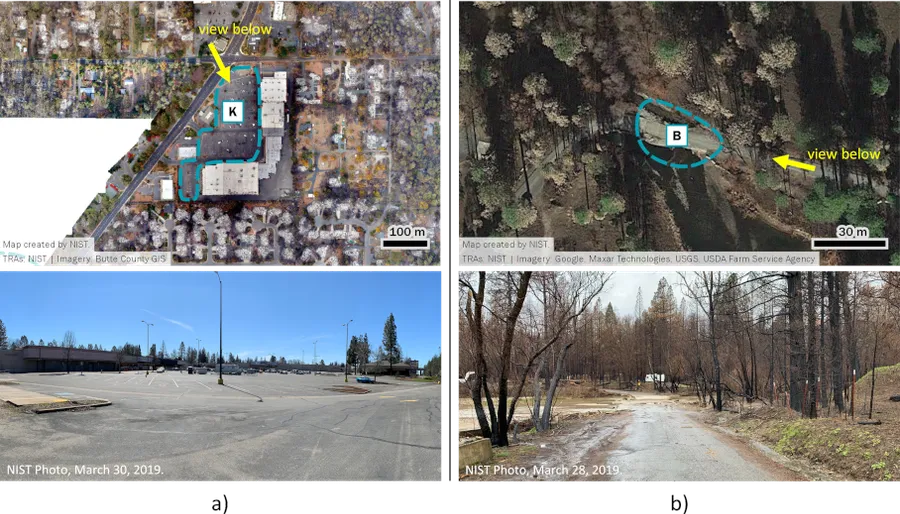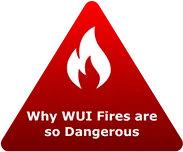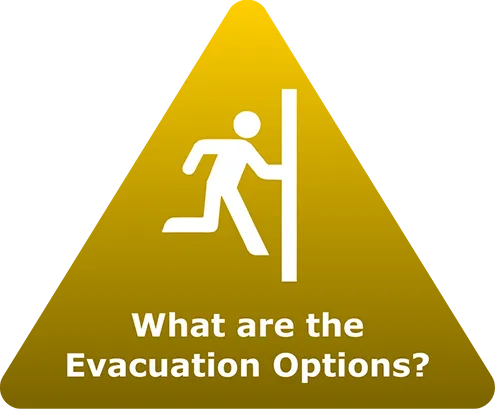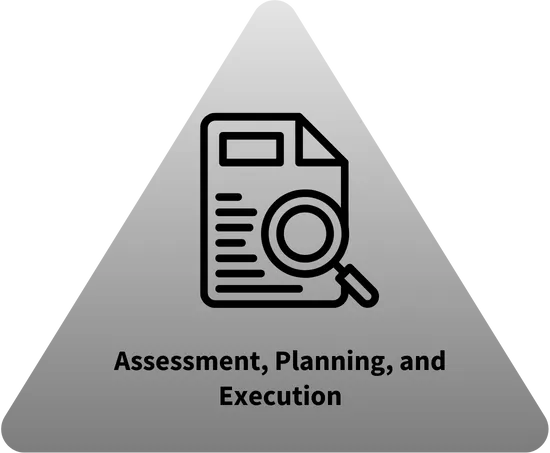
WUI Fire Evacuation and Sheltering Considerations — Assessment Planning and Execution
TRA use during the Camp Fire

The NIST post-fire case study identified 31 separate TRAs that collectively provided refuge to more than 1200 civilians during the first 24 hours of the Camp Fire. The TRA locations were binned into five categories: 14 parking lots (e.g., above left), 7 roadways, 6 structures, 3 natural areas (e.g., creek crossing, seen above right), and 1 maintained natural area (e.g., ballfield, maintained meadow).
The Paradise Plaza parking lot TRA in Paradise (a) and the Hoffman Road TRA at the creek crossing in Concow (b) are seen in the pre-fire aerial imagery and post-fire photos above.
TRAs were implemented by first responders for two reasons—to take immediate refuge from high exposure entrapments, and to manage traffic and prevent civilians from encountering high exposures. Within the first two hours of the fire's arrival in Paradise, multiple TRAs were formed in roadway intersections or similar areas of last resort.
After the initial fire front, hundreds of civilians were still evacuating when egress routes were blocked by fire and debris (abandoned and burned vehicles, downed trees and utility poles) and fire was still burning through the town. First responders established several large TRAs in parking lots of commercial shopping areas as places for people to wait until the roadways were safe to pass.



